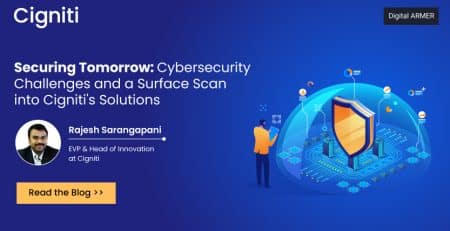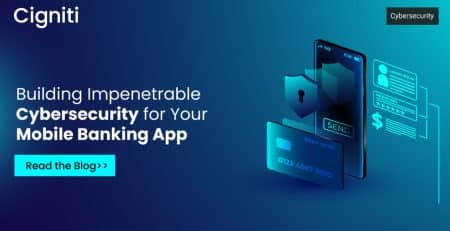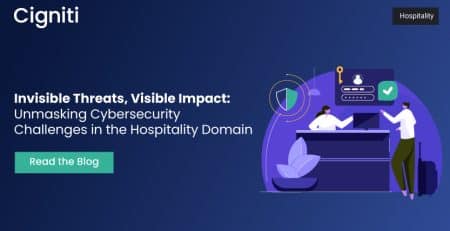Risk Mitigation through Generative AI: Safeguarding Revenue against Fraud and Cybersecurity Threats
In today’s digital age, businesses face an ever-increasing array of risks, particularly fraud and cybersecurity threats. McKinsey states, “Cyberattacks will cause $10.5 trillion a year in damage by 2025.” That’s a 300% increase from 2015 levels.
These risks can significantly impact a company’s bottom line, reputation, and customer trust. To effectively combat these challenges, organizations are turning to cutting-edge technology, and one such tool is Generative Artificial Intelligence or Generative AI.
In an age where the digital landscape is both our playground and battlefield, safeguarding revenue against fraud and cybersecurity threats cannot be unheeded. Enter the groundbreaking realm of risk mitigation through Generative AI, a technological marvel that promises to be the ultimate guardian of your financial fortress. With its relentless pursuit of patterns and anomalies, Generative AI is a vigilant sentry, tirelessly monitoring data streams for any sign of trouble.
In this blog, we elaborate on how Generative AI is utilized to mitigate risks and protect revenue against fraud and cybersecurity threats.
The Growing Landscape of Fraud and Cybersecurity Threats
As businesses become more reliant on digital platforms, the attack surface for fraud and cybersecurity threats has expanded considerably. From data breaches and ransomware attacks to identity theft and phishing schemes, the arsenal of digital threats is vast and ever-evolving. The attack surface has become broader with the rapid growth of online transactions, remote work, and the Internet of Things (IoT).
The threats are diverse, sophisticated, and ever-evolving. Here are some key statistics to highlight the scale of these challenges:
The Association of Certified Fraud Examiners (ACFE) estimates that businesses lose 5% of their annual revenues to fraud. In 2020, the FBI’s Internet Crime Complaint Center (IC3) received over 791,000 complaints of internet-related crime, with reported losses exceeding $4.2 billion.
Generative AI: A Powerful Tool in Risk Mitigation
Generative AI is a subset of artificial intelligence that focuses on creating, generating, or synthesizing data, content, or solutions. It has become a valuable asset in the fight against fraud and cybersecurity threats due to its ability to analyze, predict, and respond to these issues in real-time.
A Gartner report says that by 2027, Generative AI will play a pivotal role in reducing false favorable rates for application security testing and threat detection by an impressive 30%. This will be achieved by refining results obtained from other techniques, enabling more accurate categorization of fraud and malicious events.
Here’s how Generative AI can safeguard business from cybersecurity risks:
Advanced Threat Detection: Generative AI models can continuously analyze vast amounts of data, identifying patterns and anomalies that human analysts might miss. They can detect early signs of cyber threats, such as unusual network activity or unauthorized access attempts.
Natural Language Processing (NLP): NLP models can process and understand written or spoken language, enabling organizations to monitor customer communications and detect fraud through chatbots, emails, or social media interactions.
Predictive Analytics: Generative AI can forecast potential threats by analyzing historical data and current trends. For example, it can predict which customers are most likely to commit fraud based on past behaviors.
Anomaly Detection: Generative AI can identify unusual patterns in financial transactions, alerting organizations to potentially fraudulent activity in real time.
Content Generation: Generative AI can create highly secure and randomized cryptographic keys, enhancing the security of digital assets and communications.
Case Studies: Real-World Applications
Leading analyst firm Gartner says security and risk management have ascended to the top tier of concerns for organizations at the board level. With the escalating quantity and complexity of security breaches, there’s a growing impetus for legislative measures to safeguard consumers.
Consequently, security considerations have been prominent in shaping key business decisions. The firm predicts that by 2025, 60% of organizations will use cybersecurity risk as a primary determinant in conducting third-party transactions and business engagements.
To illustrate the effectiveness of Generative AI in risk mitigation, consider these real-world case studies:
JPMorgan Chase: The renowned bank harnesses the power of Generative AI to monitor customer transactions and swiftly identify fraudulent activities. Through this technology, JPMorgan Chase has reported significant reductions in fraud cases and the resulting financial losses, offering peace of mind to its vast clientele.
Ant Financial (Alipay): Ant Financial, the financial arm of Alibaba Group, has embraced Generative AI for fraud detection. By leveraging this cutting-edge technology, Ant Financial has successfully reduced instances of financial fraud, enhancing the security of user transactions and bolstering trust within its digital payment ecosystem.
Rapid7: As a leading cybersecurity company, Rapid7 utilizes Generative AI to analyze network traffic data on behalf of its clients. This proactive approach helps identify potential threats and vulnerabilities before they can be exploited, empowering businesses to secure their digital infrastructure and data assets effectively.
These real-world examples vividly showcase the transformative impact of Generative AI in fraud prevention and cybersecurity, underlining its pivotal role in safeguarding financial assets and digital operations.
Challenges and Ethical Considerations
Generative AI, heralded for its immense potential in risk mitigation, is a double-edged sword with challenges and ethical considerations. Employing personal data for risk mitigation demands meticulous safeguards to uphold user privacy. The responsible use of data is paramount to ensure that security measures do not encroach on individuals’ privacy rights.
The inherent biases within AI models, stemming from their training data, present a potential minefield leading to unfair or discriminatory outcomes. To mitigate this, a commitment to continuous monitoring and bias mitigation is vital to ensure that AI-driven risk mitigation remains equitable and just.
Cybercriminals are constantly evolving and can attempt to exploit vulnerabilities in AI systems, rendering them less effective in detecting threats. Ongoing model training and regular updates are critical in building robust defenses against adversarial attacks, ensuring that Generative AI remains at the forefront of risk mitigation.
Conclusion
In a world where the digital landscape is fraught with fraud and cybersecurity threats, Generative AI has emerged as a potent weapon for organizations seeking to protect their revenue and safeguard their operations. By harnessing the power of advanced technology, companies can proactively detect, respond to, and mitigate risks, bolstering their financial health and reputation.
However, it is crucial to balance leveraging Generative AI’s capabilities and addressing the associated challenges to ensure that the benefits outweigh the risks. As the technology continues to evolve, businesses that invest in robust Generative AI solutions will be better positioned to face the ever-present threats of fraud and cybersecurity.
To know more, visit the Cigniti Cyber Security Assurance page.





Leave a Reply